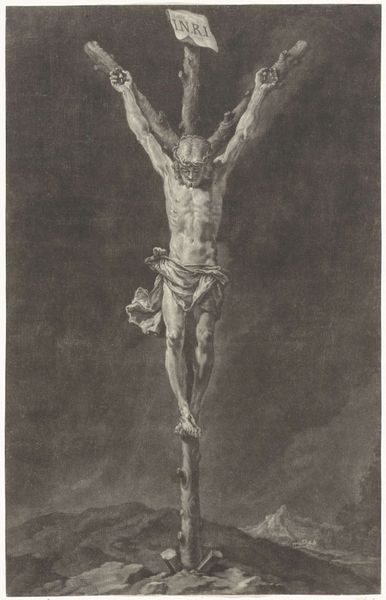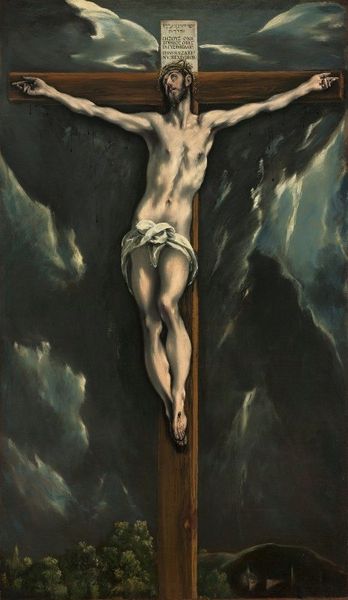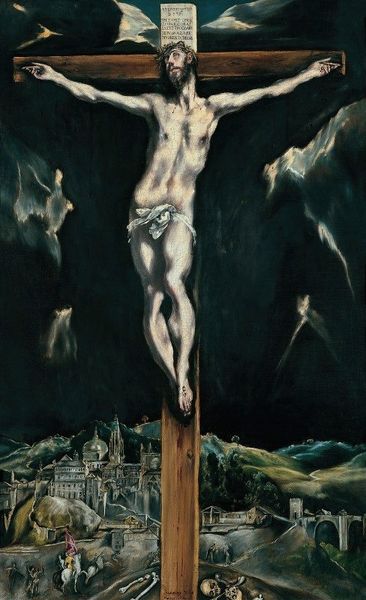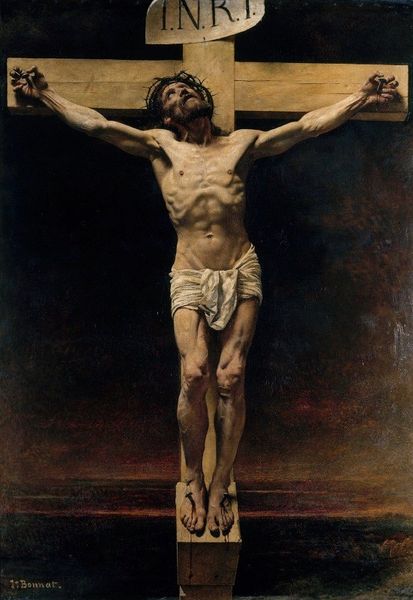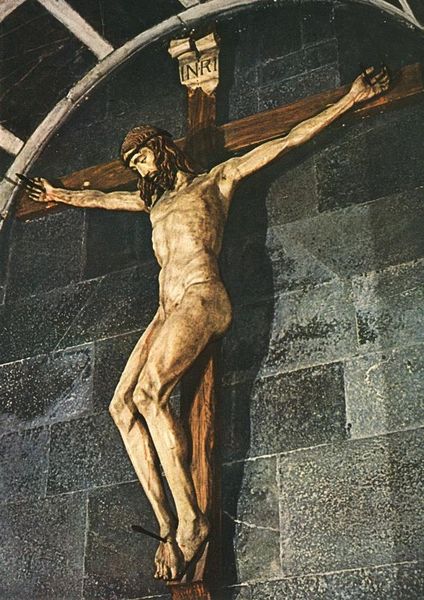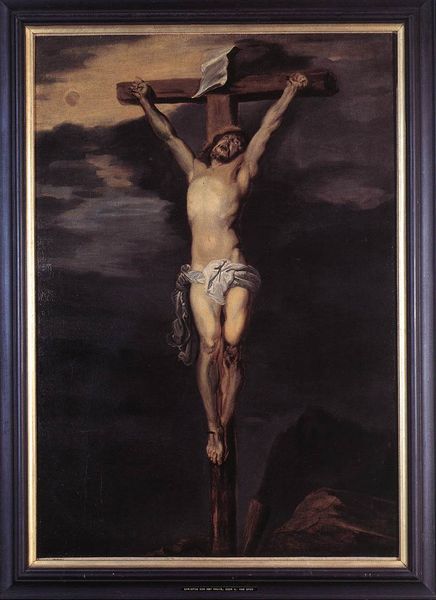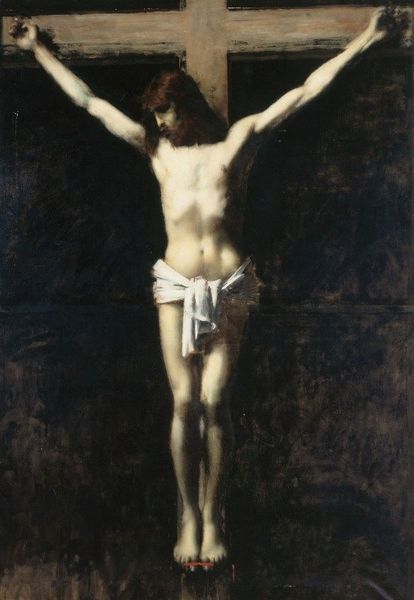
painting, oil-paint
#
painting
#
oil-paint
#
mannerism
#
jesus-christ
#
chiaroscuro
#
christianity
#
crucifixion
#
history-painting
Dimensions: 57 x 33 cm
Copyright: Public domain
Editor: Here we have El Greco's "Christ on the Cross," painted in 1587, using oil paint. The contrast between light and shadow really strikes me; it gives the whole scene a very dramatic and somber mood. How do you interpret this work? Curator: Indeed, El Greco uses chiaroscuro masterfully, pulling Christ's figure forward. Notice how the landscape is just barely visible, a potential stand-in for Golgotha. Have you considered what the obscurity and drama of this landscape represents alongside the radiant figure of Christ? The light emphasizes the sacrifice but it also implies that something new and redemptive is also occuring; do you see it too? Editor: I hadn't really thought about it that way. So the darkness isn't just about the sadness of the event, it also symbolizes, perhaps, the old order passing away? Curator: Precisely! And what do we find placed at the top of this cross, which is meant to mark the identy of this Jesus? It becomes an assertion of kingship, a profound, and provocative act, repeated countless times in both private devotion and public declaration through religious imagery. Its enduring power shows cultural memory embedded within symbols. Editor: So, it's a loaded image then, with so much cultural history bound within this tragic but somehow triumphant picture? Curator: Exactly. And the emotional resonance of this image lies in its ability to collapse time, allowing viewers across centuries to engage with both the historical event and its enduring symbolic weight, don't you think? It makes one wonder what visual symbolism endures to our present moment. Editor: This has really changed my view on El Greco. I initially just saw a sad image, but now I recognize its layered symbolism and powerful cultural implications. Thanks for shedding light on that!
Comments
No comments
Be the first to comment and join the conversation on the ultimate creative platform.

